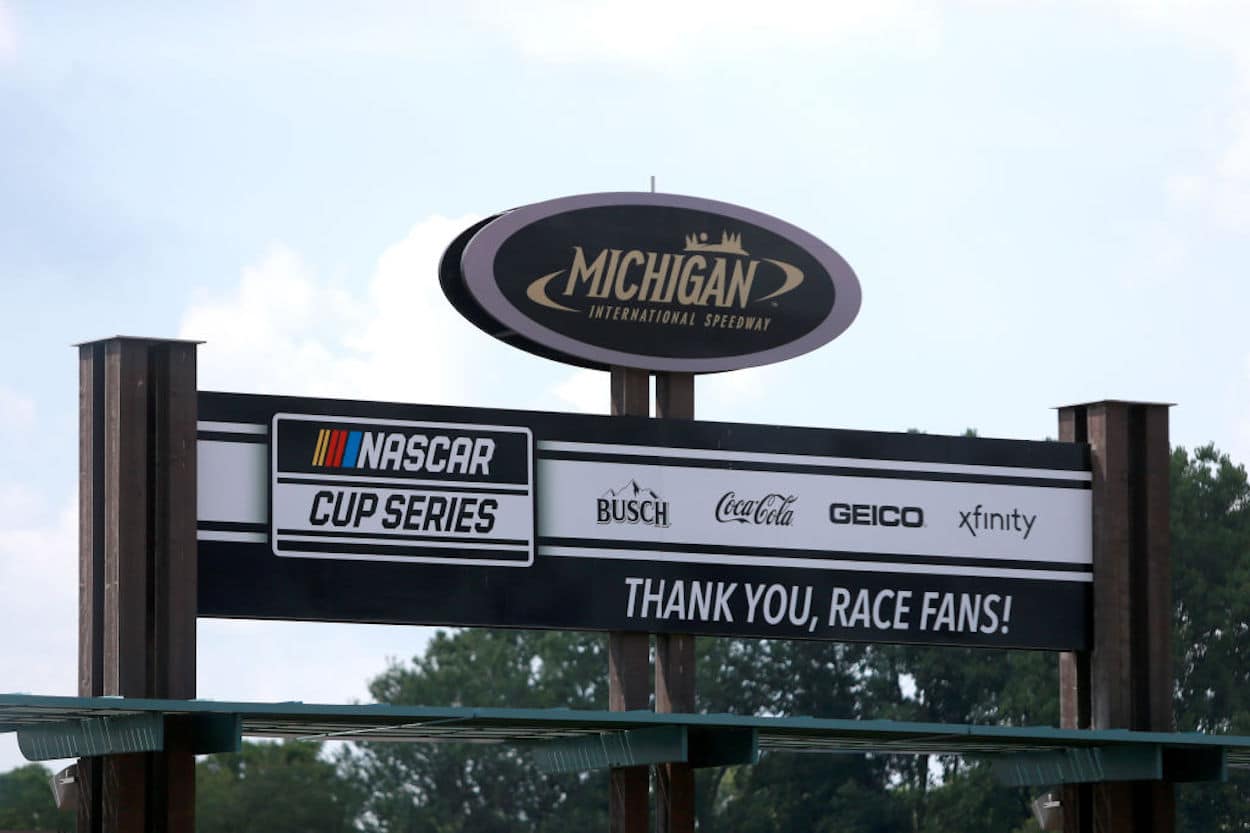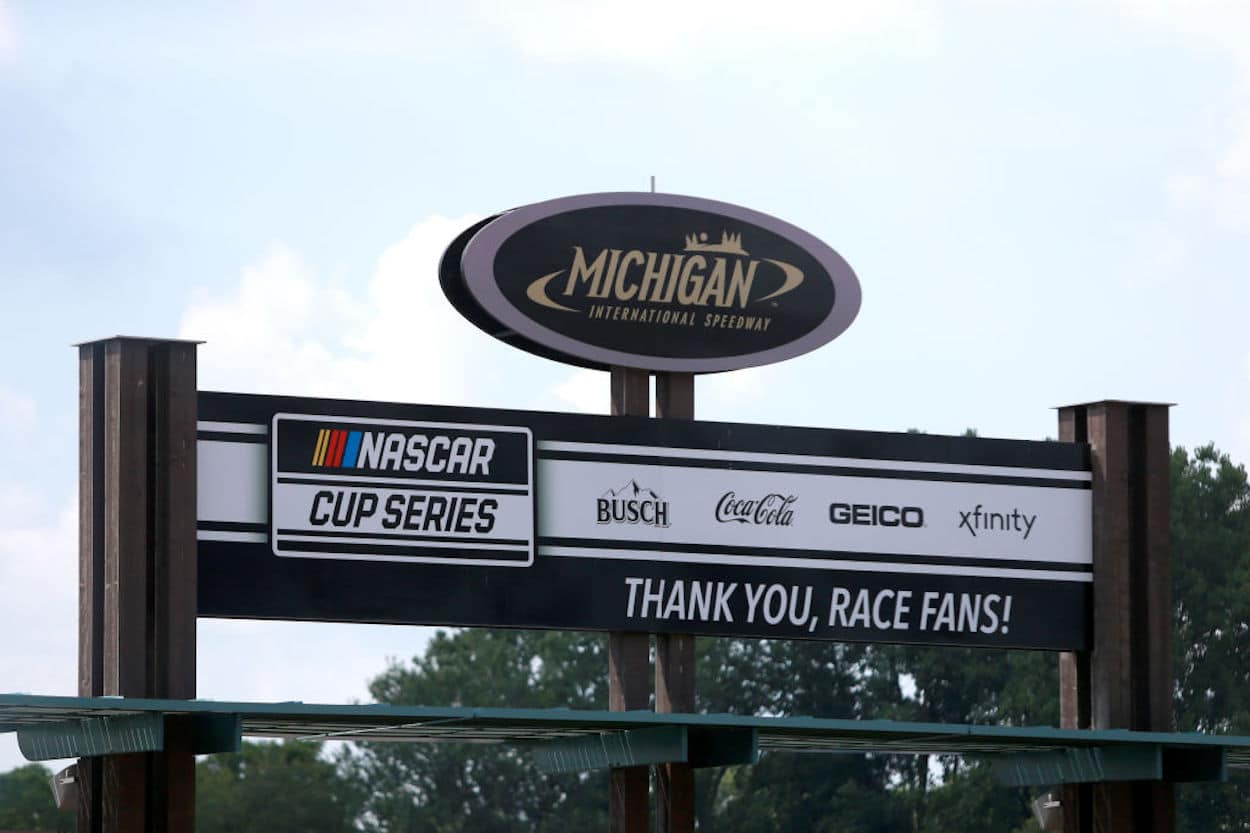NASCAR
Michigan International Speedway Has No One to Blame But Itself for Losing a Cup Race

On Sunday, Michigan International Speedway will host its first and only race of the 2022 NASCAR Cup Series season. This is notable, of course, because MIS – a 2-mile track known for some of the fastest speeds in the sport – was the site of two annual Cup races from 1974-2020.
That changed last season when NASCAR added multiple new tracks to its premier series tour and needed to make some room in the schedule to accommodate those changes. Unthinkable as it would have seemed even just a few years ago, MIS – a track steeped in tradition and strategically located near the headquarters of Ford and General Motors – came out on the proverbial short end of the stick, losing one of its two longtime Cup races.
So as the Cup Series heads to Michigan’s Irish Hills this weekend, it seems only fair to ask: Did MIS get robbed of a race that it deserved to keep, or was moving a race away from Michigan justified?
The numbers don’t lie: Michigan deserved to have a race taken away
Race tracks are judged based on a lot of factors: food, fan amenities, hospitality, weather, the quality of the racing they produce, etc. But above all else, tracks are judged by the number of people who show up for their events.
If the proof of whether a track deserves multiple Cup races is in the numbers, Michigan International Speedway has failed miserably in recent years. According to an October 2021 article in the Detroit Free Press, MIS boasted an impressive seating capacity of over 137,000 as recently as 2005. Since then, the track has drastically reduced its number of seats to around 56,000 to account for dwindling attendance.
That’s a startling decline that speaks volumes of how people perceive MIS. While Michigan is hardly the only Cup Series track to remove thousands of seats over the past couple of decades as interest in the sport has waned, it doesn’t change the fact that this is a problem. A big problem.
If MIS wants to make a case that it deserves two Cup Series races again, it needs to stop the bleeding and find a way to convince people to buy tickets and show up. One of the ways it can do this, of course, is to become known for good, close racing and great finishes. But races at Michigan have always tended to be very spread out, with drivers putting considerable distance between each other on the track and one driver often building a commanding lead and cruising to a comfortable victory.
Maybe this weekend’s first race at MIS with the new Next Generation car that debuted this season will spice up the show, but if not, the track does have options for making the racing better.
Other NASCAR tracks have stepped up to the plate while MIS has grown stagnant
In NASCAR, innovation is of critical importance. No different than the way race teams operate on the cutting edge to find the most speed in their cars, race tracks must be willing to innovate and make changes if they want to stay in the game.
With this as a backdrop, here’s what’s happened in just the last 3-5 years:
- Martinsville Speedway installed lights and moved one of its races from day to night.
- Atlanta Motor Speedway was repaved, narrowed its racing groove, and added banking.
- Indianapolis Motor Speedway pivoted from its legendary, 2.5-mile oval to hosting the Cup Series at its infield road course.
- Bristol Motor Speedway transformed itself into a dirt track for its spring race.
- Charlotte Motor Speedway built a “ROVAL” consisting of part oval track, part infield road course and moved its fall race there from the traditional quad-oval track.
- Phoenix Raceway completed a $178 million renovation project focused on improving the overall fan experience.
As for Michigan? Well, a lot happened for the good during the 10-year reign of former track president Roger Curtis. Prior to Curtis leaving MIS in 2016, the track’s chief executive oversaw several key upgrades, including the installation of SAFER barriers, a track repave, and various new fan amenities.
Since Curtis stepped away, however, little of note has happened at MIS – aside from a continued decline in attendance and the track hiring not one but two new presidents, the latest of whom took the helm less than a year ago. It’s time for Michigan to try something radical – no, not pouring dirt on its surface, but maybe narrowing its racing groove and adding some banking like Atlanta.
Will it work? Maybe not. But it’s certainly worth a shot. The one thing MIS can’t afford to do is stick with the status quo. Because the status quo clearly isn’t working.
Michigan must make changes or risk losing everything

Due to Michigan International Speedway’s strategic location – just over an hour away from General Motors headquarters in Detroit and about the same distance from Ford headquarters in Dearborn – Chevrolet and Ford drivers have always taken great pride in performing well in their respective manufacturer’s backyard. Toyota drivers, meanwhile, have enjoyed playing the role of spoiler at times.
Because Michigan has long been a place where representatives of two of the sport’s manufacturers have convened in full force, the track wasn’t considered to be in any real danger of losing a race even as other staples of the Cup schedule like Atlanta and Darlington surrendered race dates over the past couple of decades.
But then, with seemingly little warning, it happened in 2021. And Michigan is once again stuck with just one Cup race in 2022.
While it’s certainly possible that MIS could eventually regain one of its lost races just as Atlanta and Darlington have done in the past couple of years, don’t bet on this happening. At least not until the track decides to get with the times and make some significant changes, like many others have done.
As important as Michigan is to the automakers, and as much as drivers and teams want to impress them whenever they show up at MIS, this isn’t enough to single-handedly make the speedway a place where fans are willing to pay big bucks to watch races.
Will the track realize this before it’s too late? For the sake of having any future in NASCAR – and the possibility of ever regaining its second Cup date – let’s hope so.
Like Sportscasting on Facebook. Follow us on Twitter @sportscasting19 and subscribe to our YouTube channel.
RELATED: NASCAR Has Made a Mockery of Indy and Created Irreparable Damage by Ditching the Oval











